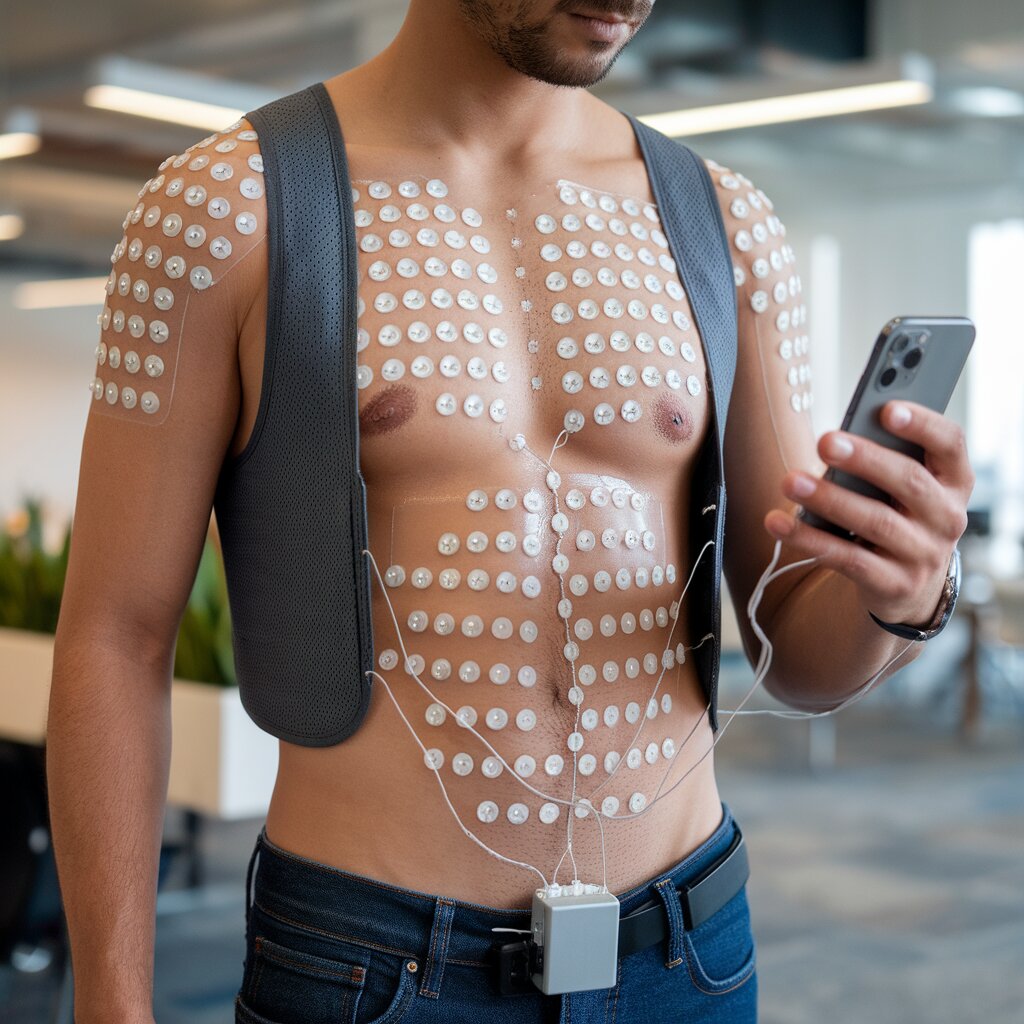In a groundbreaking development, researchers at the University of Washington have unveiled a stretchable, wearable device capable of converting body heat into electrical power. This innovative technology, which can light up an LED using only the warmth of human skin, promises to revolutionize the landscape of wearable gadgets by eliminating the dependency on traditional batteries.
One of the persistent challenges with fitness trackers and other wearable electronics is their finite battery life. However, this new flexible and durable electronic prototype tackles this problem head-on by harvesting energy from body heat, transforming it into electricity that can power small electronics such as sensors, LEDs, and even batteries.
Remarkably resilient, this device remains functional even after being punctured multiple times and enduring over 2,000 stretches. Detailed in the journal Advanced Materials, the breakthrough highlights a significant advancement in wearable tech.
Senior author Mohammad Malakooti, an assistant professor of mechanical engineering at the University of Washington, has long envisioned such a capability. “When you put this device on your skin, it uses your body heat to directly power an LED. As soon as you put the device on, the LED lights up. This wasn’t possible before,” Malakooti stated.
Contrary to traditional heat-to-electricity devices that are typically rigid and brittle, Malakooti’s team has designed one that is highly flexible, allowing it to conform seamlessly to the shape of a person’s arm. The researchers embarked on the project by first running simulations to identify the optimal combination of materials and device structures, following which they painstakingly developed almost all the components in the lab.
The device comprises three primary layers. At its core are solid thermoelectric semiconductors tasked with converting heat to electricity. These are encased within 3D-printed composites that boast low thermal conductivity, thus enhancing energy conversion efficiency while simultaneously reducing the device’s weight. To achieve stretchability, conductivity, and electrical self-healing properties, the semiconductors are interlinked with printed liquid metal traces.
Unique to this design, liquid metal droplets are embedded within the outer layers. These droplets enhance heat transfer to the semiconductors and maintain the device’s flexibility, as the metal remains in a liquid state at room temperature. Excluding the semiconductors, the entirety of the device was developed in Malakooti’s lab.
Beyond wearable gadgets, Malakooti envisions broader applications for this technology. “You can imagine sticking these onto warm electronics and using that excess heat to power small sensors,” he explained. This concept could prove invaluable in data centers, where servers generate substantial heat and consume significant electricity. By capturing and repurposing this heat, the device can power temperature and humidity sensors, offering a sustainable, maintenance-free solution that reduces overall energy consumption.
Additionally, these devices hold the potential to work in reverse. When supplied with electricity, they can heat or cool surfaces, paving the way for applications in virtual reality systems and other wearable accessories that could deliver hot and cold sensations or enhance wearer comfort.
While these advanced features are still a work in progress, the researchers are currently focused on delivering wearables that are efficient, durable, and provide immediate temperature feedback. Future developments hold exciting possibilities for enhanced user experiences and sustainability.
This pioneering research was supported by the National Science Foundation, Meta, and The Boeing Company, and involved contributions from coauthors at the University of Washington and the Izmir Institute of Technology.


